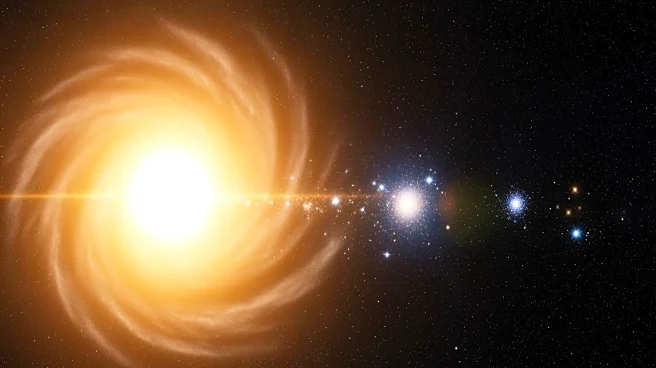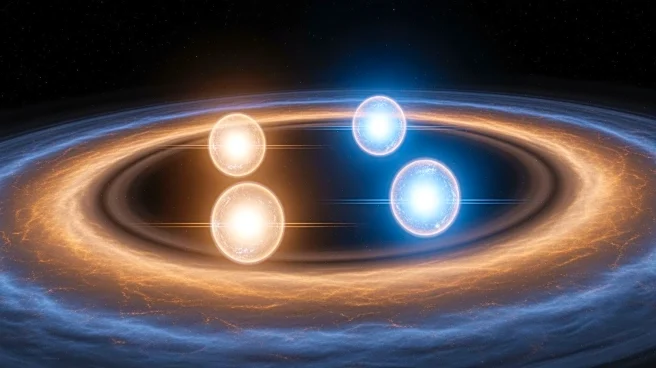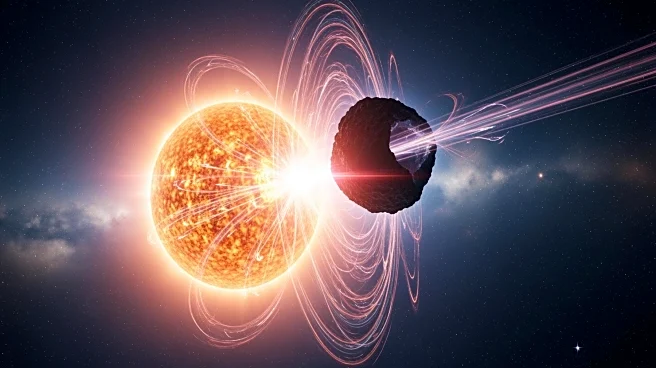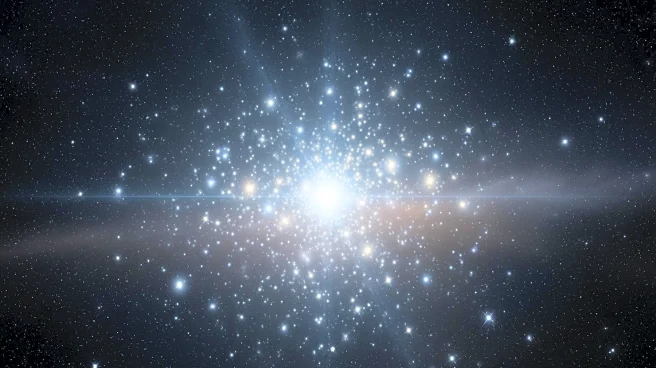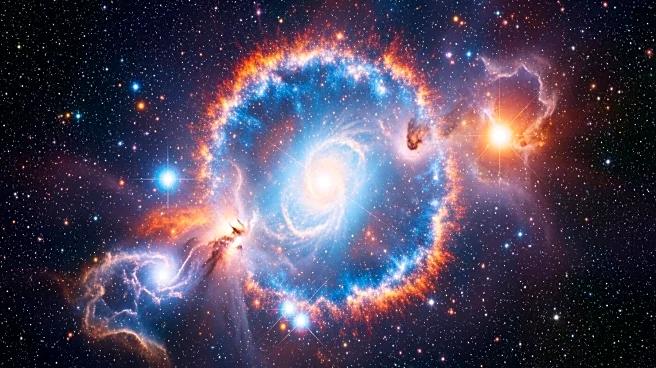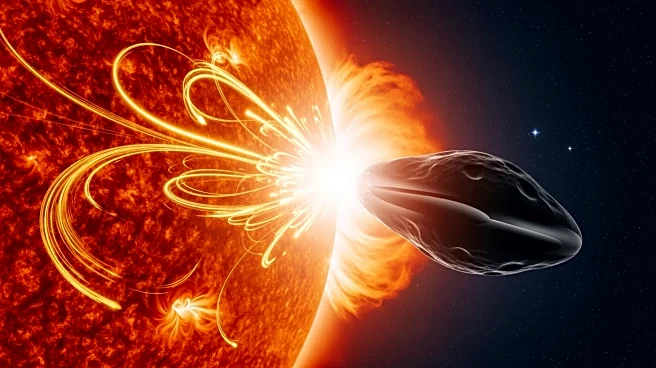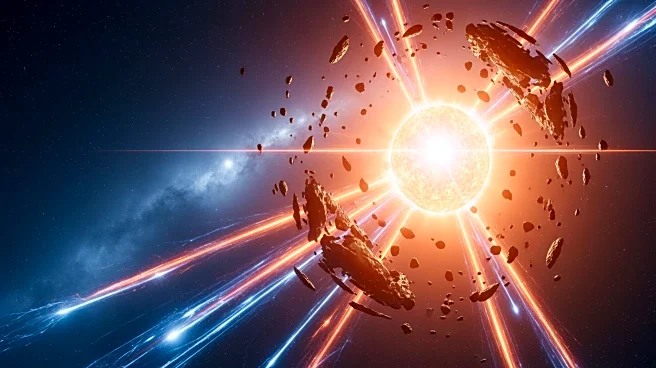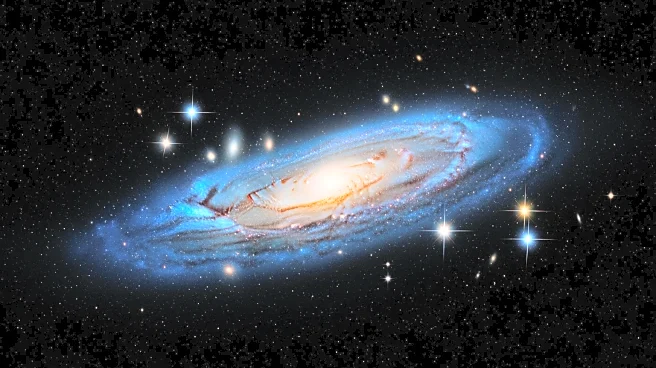What's Happening?
Recent research led by Amir Siraj from Princeton University has provided new insights into the early life of the Sun, suggesting it left its birth cluster much sooner than previously thought. The study focused on the 'distant sednoids,' a group of minor
planets in the solar system that never come closer than 40 astronomical units (au) to the Sun and spend much of their orbits beyond 400 au. By analyzing the orbits of these sednoids, the researchers concluded that the Sun's early interactions with nearby stars in its birth cluster were limited. This implies that the Sun departed from the dense and potentially disruptive environment of its birth cluster within approximately 50 million years. The findings are based on numerical simulations that examined the gravitational effects of close stellar flybys on the sednoids' orbits.
Why It's Important?
This research is significant as it provides a clearer understanding of the early dynamics of the solar system and the Sun's formative years. The study's conclusions suggest that the Sun's early departure from its birth cluster minimized gravitational disruptions, allowing for a more stable development of the solar system. This has implications for our understanding of planetary formation and the conditions necessary for the development of life. The findings also highlight the importance of studying distant solar system objects to gain insights into the history and evolution of our cosmic neighborhood. As the Vera C. Rubin Observatory is expected to discover thousands of new distant solar system objects, this research could pave the way for more detailed studies on the solar system's early history.
What's Next?
The study's authors anticipate that future discoveries of distant solar system objects by the Vera C. Rubin Observatory will refine their findings and provide even stricter constraints on the Sun's early interactions with its birth cluster. This could lead to a better understanding of the processes that shaped the solar system and potentially reveal new insights into the formation of other planetary systems. As more data becomes available, astronomers will be able to test and refine their models, potentially leading to breakthroughs in our understanding of stellar and planetary evolution.
Beyond the Headlines
The research also touches on broader questions about the nature of star formation and the dynamics of star clusters. Understanding how stars like the Sun interact with their birth environments can provide insights into the formation of other planetary systems and the potential for life elsewhere in the universe. The study also raises questions about the role of stellar flybys in shaping the architecture of planetary systems, which could have implications for the search for exoplanets and the study of their habitability.
